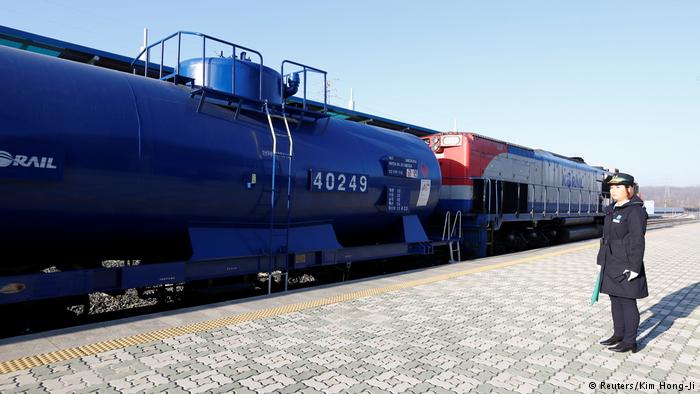South Korean train crosses into North Korea
December 3, 2018 | Expert Insights

A South Korean train crossed into North Korea for the first time, despite UN Sanctions. The two countries have initiated a study on renovating North Korea’s railway system and linking it to South Korea.
Background
On June 25th 1950, the Korean War began when 75,000 soldiers from the North bombarded across the 38th parallel, the boundary between the Soviet-backed Democratic People’s Republic of Korea to the North and the pro-Western Republic of Korea to the South. The invasion was considered as the first military action of the Cold War, and by July of 1950 American troops had entered the fray on South Korea’s behalf. As a product of the Cold War between the Soviet Union and the United States, Korea had been split into two sovereign states. The Korean War lasted 3 years until July 27, 1953.
After the war ended, the two countries split between the 38th parallel and a wall was built at the border or Demilitarized Zone (DMZ). For the last 65 years, North and South Korea have technically still been at war because no peace treaty has ever been signed. The DMZ is heavily militarized.
The Koreas’ rail lines have been severed since the Korean War. Freight services ran between the two Koreas from December 2007 until November 2008 to support factories in a joint economic zone at Kaesong in North Korea. But the line was cut in 2008 and the Kaesong park eventually closed in 2016 as relations deteriorated.
Analysis
A South Korean train crossed through the heavily militarized frontier into North Korea for the first time in a decade as Seoul pushes ahead with a plan to reunite the two railway networks despite heavy UN Sanctions. The two countries began a joint study on renovating the North’s decrepit rail system and linking it to South Korea.
The train pulled six cars carrying dozens of Korean officials and experts, who will undertake an 18-day, 750-mile survey of railway tracks in the North. The engineers boarded the train in Dorasan, just north of Seoul, for the short journey to the Demilitarised Zone which has divided the Korean peninsula since the Korean War in the 1950s. The journey required special permission from the United Nations to carry equipment and fuel into the North despite the sanctions regime.
The joint study “signals that inter-Korean cooperation is reaching a new level,” said Kim Eui-kyeom, the spokesman for President Moon Jae-in of South Korea. This study is one of a number of collaborative projects that Moon has promoted in order to develop closer ties with North Korea. During the April meeting with South Korean President Moon Jae-in, North Korean leader Kim Jong Un admitted the railways in his country were in an “embarrassing” state. Moon has outlined ambitious plans to set up an East Asian Railway community, as a first step towards the sort of regional economic integration Europe established after World War II.
Seoul plans to hold a ceremony before the end of the year to establish road and rail links between the two Koreas, first agreed upon by the countries’ two leaders at a summit in April. “The inter-Korean railway connection project is intended to overcome division and open a new future of the Korean Peninsula,” Unification Minister Cho Myoung-gyon said at a ceremony at Dorasan Station. “Through the one connected railway, the South and the North will prosper together and the ground for peace on the Korean Peninsula will be consolidated,” he said. “The train crossing the Korean peninsula will carry peace and prosperity to northeast Asia and the world.”
The survey will run in two stages. The first will go through central North Korea and along the north western coast to the city of Sinuiju near the Chinese border. The second phase will go from an area near the Mount Kumgang tourist region and along the east coast up to a riverside station near the border with Russia. The train will include passenger and sleeping cars as well as a power-generator car and a fuel-tank.
Seoul wanted the railway survey to take place earlier this year, but the plan was initially blocked by the U.S.-led United Nations Special Command in South Korea. The project was given a green light recently as the United States expressed support for the survey and the U.N. Security Council granted a sanctions exemption.
Assessment
Our assessment is that South Korea whose only land border is with the North has always wanted to build a trans- Korean rail road that could provide a link to China and beyond. This will increase the quantum of exports which are presently done by sea to China and Europe. It is also easier to import Russian oil and other natural resources.
We feel that South Korea has been quite eager to pursue such projects but the United States has been firm that South Korea refrains from such economic collaborations with the North until it completely denuclearizes.








Comments